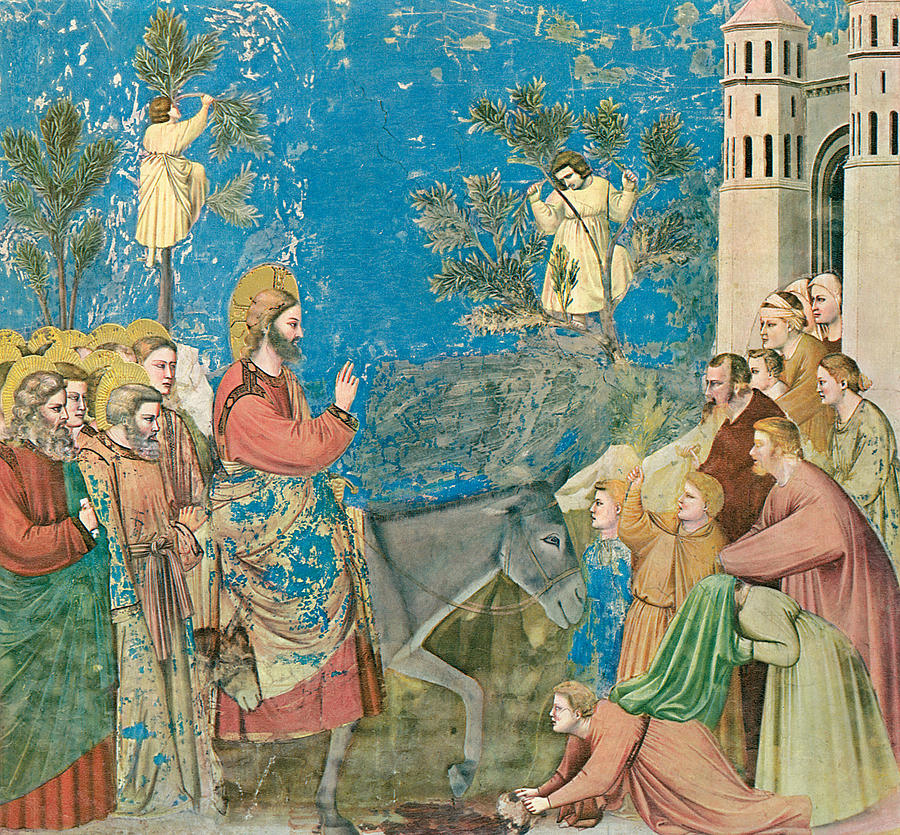Today is Palm Sunday and to help celebrate Christ’s Entry into Jerusalem and the beginning of Holy Week here are two wonderful paintings envisaging the event from the early fourteenth century and the early flourishing of the Italian renaissance. The similarities between them are hardly surprising given their historical and geographical proximity, and the clear links between the two artists.
Christ’s Entry into Jerusalem
Giotto di Bordone (
circa 1257-1337) completed 1305
Image: pixels.com
 Christ's entry into Jerusalem, Pietro Lorenzetti (1280-1348), active circa 1306 -1345. Painted 1316/7-1319Basilica of San Francesco d'AssisiImage: Wikipedia
Christ's entry into Jerusalem, Pietro Lorenzetti (1280-1348), active circa 1306 -1345. Painted 1316/7-1319Basilica of San Francesco d'AssisiImage: Wikipedia
These great paintings well illustrate the sculptural influences working on the artists as well as their rich colour palettes. They offer dignity and serenity to their viewers in a time that had not that much serenity or dignity in either Italy or Europe as a whole. 1317-19 had witnessed a famine which stretched across the continent, political life was turbulent and violent in Italy - no surprise there - but also in France after the death of King Philip IV, in England under King Edward II and the continuing war with Scotland. The Hundred Years War was in the offing. Political authority was collapsing in much of Northern Europe from Denmark to Poland, and conflicts came and sent over the succession and government of the Central European kingdoms. The Papacy had left Rome and was soon to settle in Avignon. The population was still rising but resources were getting tighter. The climate was possibly beginning to get worse. So all in all not that promising, almost familiar to us today. Nonetheless the arts flourished not just in painting but sculpture, architecture, and very soon in vernacular literature. So great art is a sign of hope in troubled times ( though where it is these days is an open question ), and great art depicting Christ’s coming to His Passion in troubled times should give us hope, the hope of Easter.




No comments:
Post a Comment